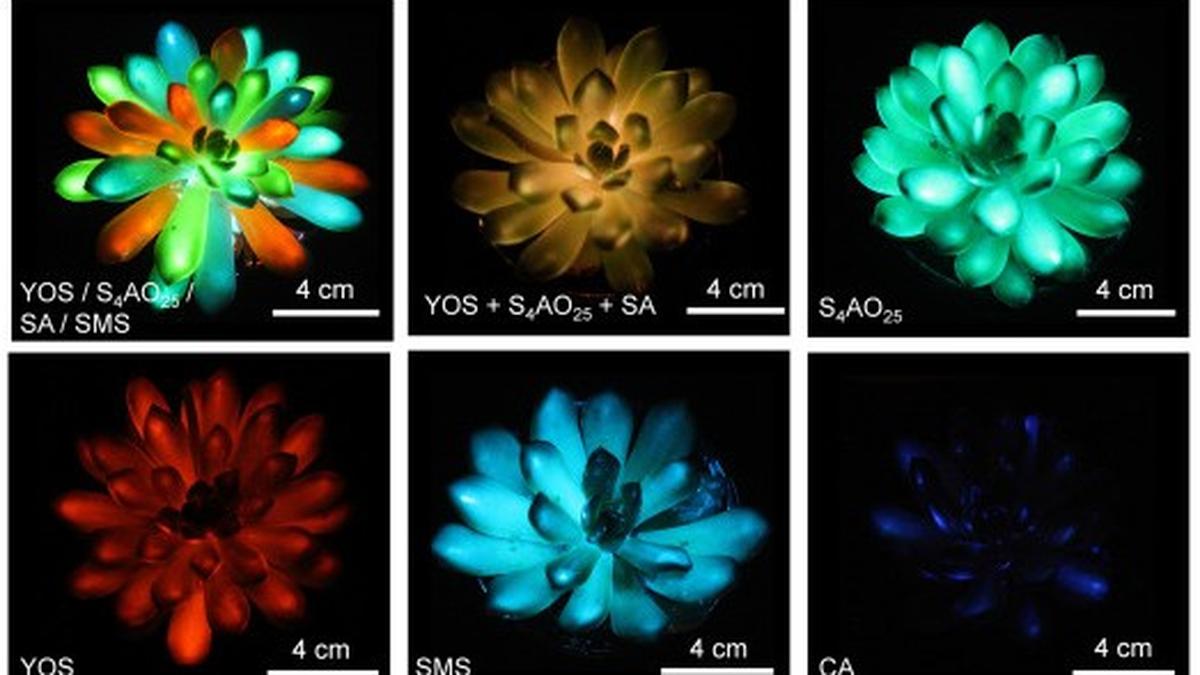Material-engineered multicolor luminescent plants
(This article forms a part of the Science for All newsletter that takes the jargon out of science and puts the fun in! Subscribe now!)
Glow-in-the-dark plants are not new. In fact, scientists created the first bioluminescent plant way back in 1986, when they combined genes from firefly, Photinus pyralis, with a type of tobacco plant. Fast forward to 2024, the first genetically engineered bioluminescent plant, a petunia variety, was made commercially available for sale in the United States for the first time. Now, scientists have published a new research paper that exhibits multicoloured luminescence in plants, and for the first time, this does not involve altering the genetics of the plant.
On August 27, 2025, scientists working in China published their findings in Matter journal and said that they used glowing particles in a succulent called Echeveria ‘Mebina’, instead of genetically engineering the plant. According to them, material engineering often involves the use of tiny glowing particles, but these produce weak results. To improve the glowing performance, this new research uses afterglow particles greater than 5 μm.
These plants can recharge their luminescence with sunlight, and the process takes only ten minutes. In their experiment, the scientists also observed that the leaves of E. ‘Mebina’ have a dense but evenly structured interior with enough space between its cells, which creates pathways for larger glowing particles to spread quickly and evenly.
The afterglow particles were inserted into the plant through injections into the leaves. The size of the particles was a crucial factor for the luminescence – medium-sized ones, around 7 μm, achieved the brightest glow, 3.6 times stronger than smaller particles and 2.3 times stronger than larger ones also used in the experiment. This was attributed to how well the particles diffused within the succulent.
Scientists also tried using different compounds as afterglow material to induce multicoloured luminescence in the plant. This was successful for a variety of colours in the visible spectrum, but it was observed that particle size, and not chemical composition, was the dominant factor that controlled how well they diffused within the plant.
This experiment is important because it creates the possibility of low-carbon, plant-based light emission which can have future practical uses.
From the Science pages
Question Corner
Flora and fauna
Published – September 10, 2025 04:31 pm IST
